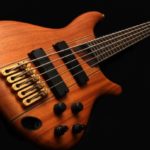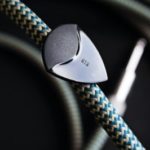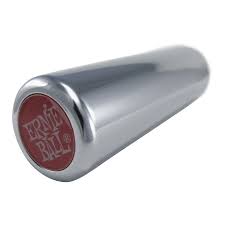
HOW GUITAR SLIDES WORK
A slide is just a small tube that slips onto your finger, usually the pinky or ring-finger. Considering it is such a simple object, it’s amazing to think of how much it can change your sound, increase the diversity of your expression and even help you to approach your familiar slide guitar in a new and stimulating manner. There is a lot you can do with one of these little tubes, and they can sound beautiful!
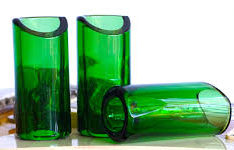
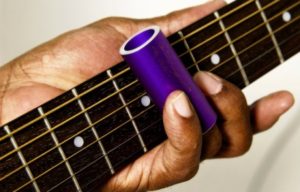
The slide “cuts” the string at the point of contact, shortening it and altering the pitch – think of it as a hand-held fret. Essentially you are playing a simple bar chord, and for that reason it makes most sense to play slides with open tunings.

Vibrating
BB King’s signature bends and vibratos apparently were trying to emulate slide guitar. Once mastered, playing with a slide will get you quivering and shaking those notes like a banshee on acid. Or like Muddy Waters.
“Music comes from the musician, not the instrument.” … Victor Wooten
Sympathetic Vibrations
These behave differently when you play slide guitar. First of all, the open tuning places strings in a different harmonic relationship with one another, and they “excite” each other along a different, more harmonious pattern. Furthermore, a slide allows the “headstock-side” section of the string to vibrate too, albeit discreetly. Nonetheless, this extra vibration will subtly enhance the tone you get, by enriching the overtones that reach your ear or by influencing the main strings’ vibration.
Creativity
Open tunings give you not only a different timbre, but also the notes are no longer in their habitual positions. You end up with new melodies by “accidentally” playing unexpected notes. This re-arrangement lets you explore the fretboard and stimulates creativity.
Microtones
As you are not limited to the pre-defined notes imposed by the fixed position of the frets, a slide allows a more nuanced use of microtones: that is, the pitches between frets. This can be used to weave new melodies into your playing.
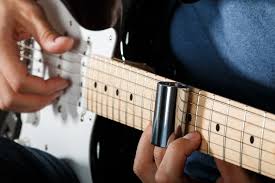
Once you get the feel for your slide and become acquainted with the tuning, it’s time to focus more on what your fingers are doing. The slide touches all the strings at once. The additional strings vibrate, often rather loudly. You will want to mute these unintended strings for a tighter, more controlled result. You can do this with your right hand, either with the edge of your hand or your thumb. Most slide players tend to prefer fingerpicking techniques, often an unusual mixture of using thumb and fingers in tandem depending on the desired intensity and control.
To mute the strings, you can also use the index finger of your left hand. If your slide is on the ring finger, your index finger is in a good position to gently press over the strings to mute them. This will also accustom you to using the slide and your other fingers at the same time. Slides are limiting in the sense that you only play one fret position at a time. By integrating your fingers into the technique, you can add more fluidity and flexibility into your melodic repertoire – the best of both worlds.
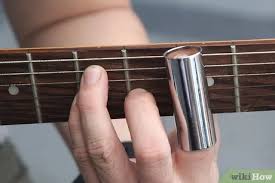
Slides come in many different sizes and styles. They vary in length, the thickness of the wall and in the diameter of the hole. It should fit your finger perfectly, allowing for a bend at the second knuckle. The right fit is crucial. A loose-fitting slide can slip off your finger, and rattle around loosely. It can get in the way of your other fingers. This will interfere with your playing. causing you to readjust the slide. A nice fit, snug is your first step to enjoying and mastering slide guitar.
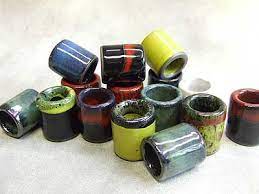
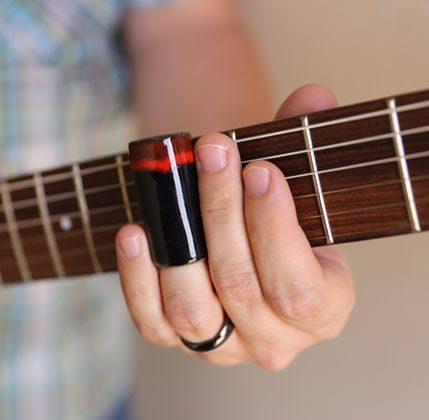
The length will also matter, and influences how much you can bend your knuckle. The thickness of the walls and the material it is made from will determine the weight. Heavier slides glide more smoothly over the strings, but they slow you down and increases fatigue. This can be advantageous if you slide slowly into the notes. This can create a bluesy ambiguity to your melodies. “Lazy” slide playing also is perfect for adding texture, and filling space between lines.
The best slide for any guitarist will vary, based on personal preference. It depends on your playing style, as well as your finger shape and size. Taking the time to try out a couple of different ones is suggested. Choose the one that feels best and is comfortable to play with. Slides can be made from many different materials, which produces different sounds and effects. For more information about guitar slides, see the article, Types Of Guitar Slides

Guitar & Gear Articles








